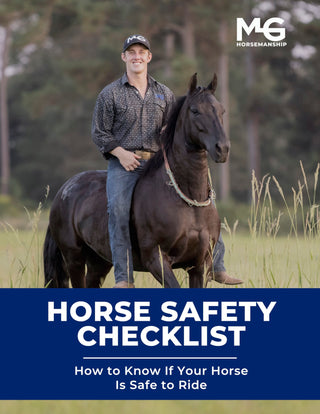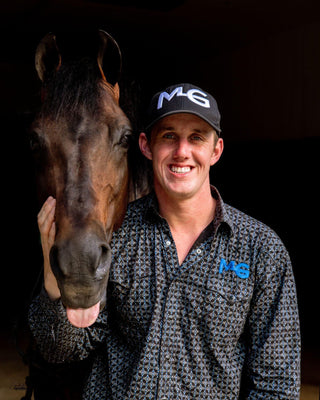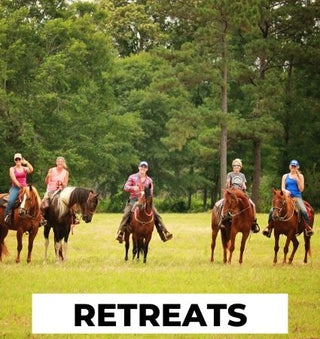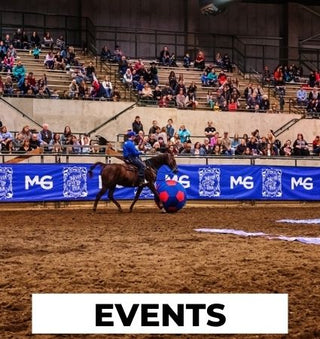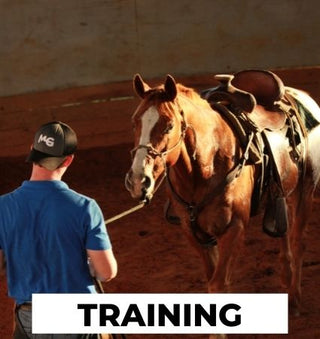Watch the Video Here or continue reading below!
When you're in the market for a new horse—whether it's from a trainer, a private seller, or your "crazy Uncle Bob"—it’s critical to know who that horse really is. Don’t rely on word of mouth or assumptions. In this guide, horse trainer Michael Gascon walks us through how to test ride a horse safely and effectively before committing to a purchase. Follow this checklist to evaluate any horse, even if you’re told they’re “broke.”
Why It’s Important to Test Ride Before You Buy
Many horses are described as "easy to ride" or "kid-safe," but those terms can mean vastly different things depending on who's talking. A horse that's calm for an experienced rider might not be suitable for beginners or children. A proper test ride—starting from the ground—is the best way to reveal a horse’s true nature, attitude, and training level.
Step 1: Start from the Ground
Observe First Impressions
Before you ride, pay attention to how the horse acts on the ground. Do they respect your space? Are they attentive or distracted? A horse that pushes into you or ignores your cues might not be as "broke" as advertised.
“Assumption is the father of error. Don’t listen to what people say—listen to what the horse tells you.” – Michael Gascon
Step 2: Perform the Kindergarten Test (Basic Respect)
Respect Your Space
Start by walking, stopping, and turning near the horse to see if they acknowledge your presence and respect your space. Lightly bump them if they crowd you and observe their reaction. This reveals their foundational respect level and shows how they handle pressure.
Apply Pressure From a Distance
Throw your hands up, make noise, or step suddenly. Watch how the horse reacts. A gentle horse might get startled but won’t overreact. A horse that becomes aggressive or panicked may not be safe for beginners or kids.
Step 3: Lunging – Check the Horse’s Responsiveness
Ask for Movement Without Force
Use a lead rope and a popper to ask the horse to walk in a circle around you. Don’t go for one big smack—instead, apply light, consistent pressure until they move. Then release immediately. This builds responsiveness without fear.
Watch Their Body Language
Are they moving straight and relaxed? Do they look at you with one eye as they circle? A horse that constantly looks away is either distracted or disrespectful.
Step 4: Check the “Steering Wheel” on the Ground
Lateral Flexion
Using a rope around the horse’s neck, check if you can bend their head to either side. If the horse resists, kicks, or panics, it's a warning sign. You want to see soft, easy movement in the direction you ask.
"If I can’t flex their head or move their butt on the ground, I don’t ride." – Michael Gascon
Step 5: Desensitize Safely
Introduce Tools Gently
Use a flag stick, lead rope, or tarp to rub all over the horse’s body—head, back, legs, and flanks. Keep yourself in a safe position, with their head facing you, and only a short length of rope so the horse can't swing around and kick.
Watch for Extreme Reactions
Even horses that appear calm can become dangerously reactive with new stimuli. If a horse gets scared by a flag stick or panics under pressure, they may not be ready for new riders.
Step 6: Mount Only After Groundwork is Passed
Ask the Seller to Ride First
Always have the seller ride first. Some sellers may list an unridden horse just to get someone else to “test” them. Make sure the horse has been ridden and can handle it before you hop on.
Mount Cautiously
Once the horse passes groundwork and someone else has safely ridden them, mount gently and check lateral flexion again. Make sure the horse can give their head and stand still before asking for forward movement.
Step 7: Evaluate Under Saddle
Start with Basic Control
Don’t just go for a trot or canter. Begin with steering. Does the horse respond to rein pressure? Can you move their hindquarters? If the horse resists or is sticky, it's not ready to progress.
Test Forward Energy
Kick lightly and see how the horse reacts. Is it willing to go forward without resistance or panic? A calm horse that won’t move is just as concerning as a spooky one.
Step 8: Introduce Simple Obstacles
Use Tools like a Soccer Ball
Try moving objects like a soccer ball to see how the horse handles unusual stimuli under saddle. This can help test their willingness and trainability.
Final Thoughts: Know Who You’re Buying
Every horse is different. Some may be lazy but safe, others reactive but respectful. The key is to test before you trust. If something feels off on the ground, it will be worse in the saddle.
“If it’s broken on the ground, it’s broken in the saddle.”
Spending just 10–15 minutes running these checks can save you from dangerous situations, wasted money, or heartbreak down the line.



